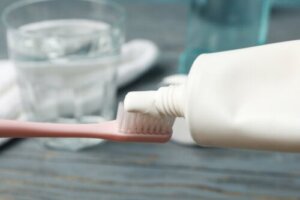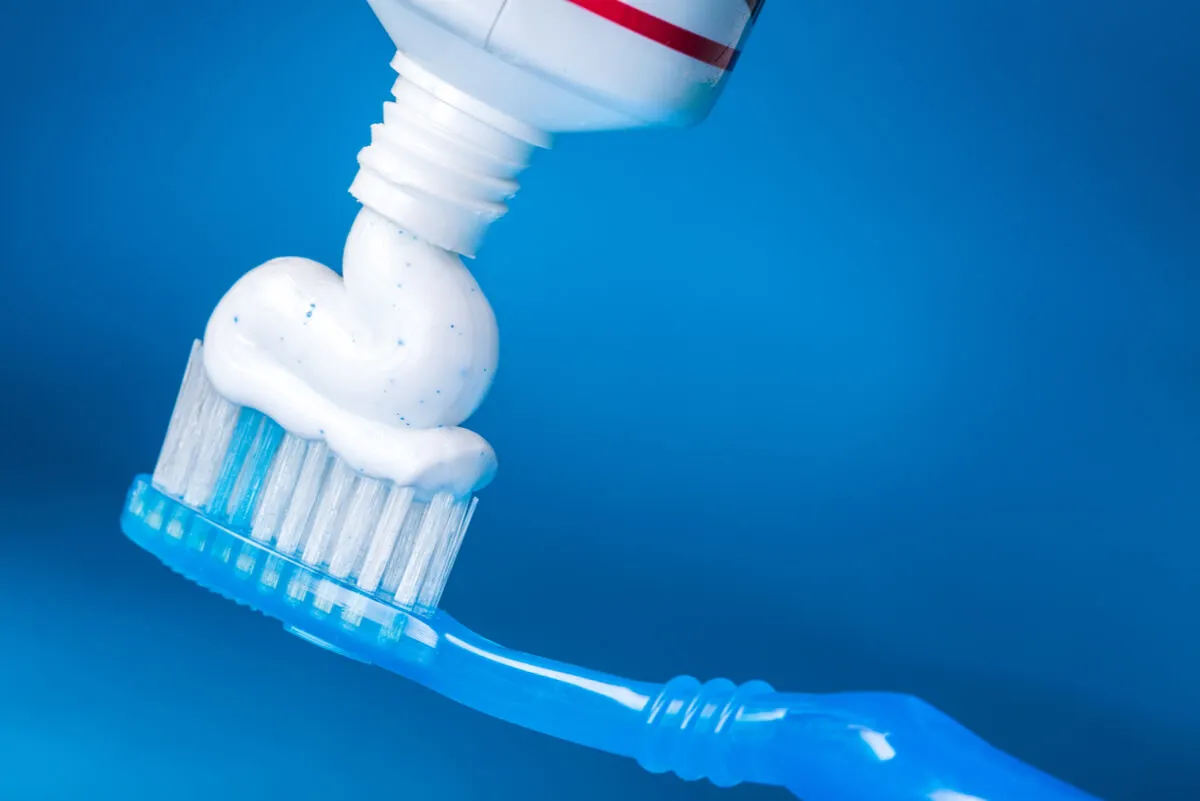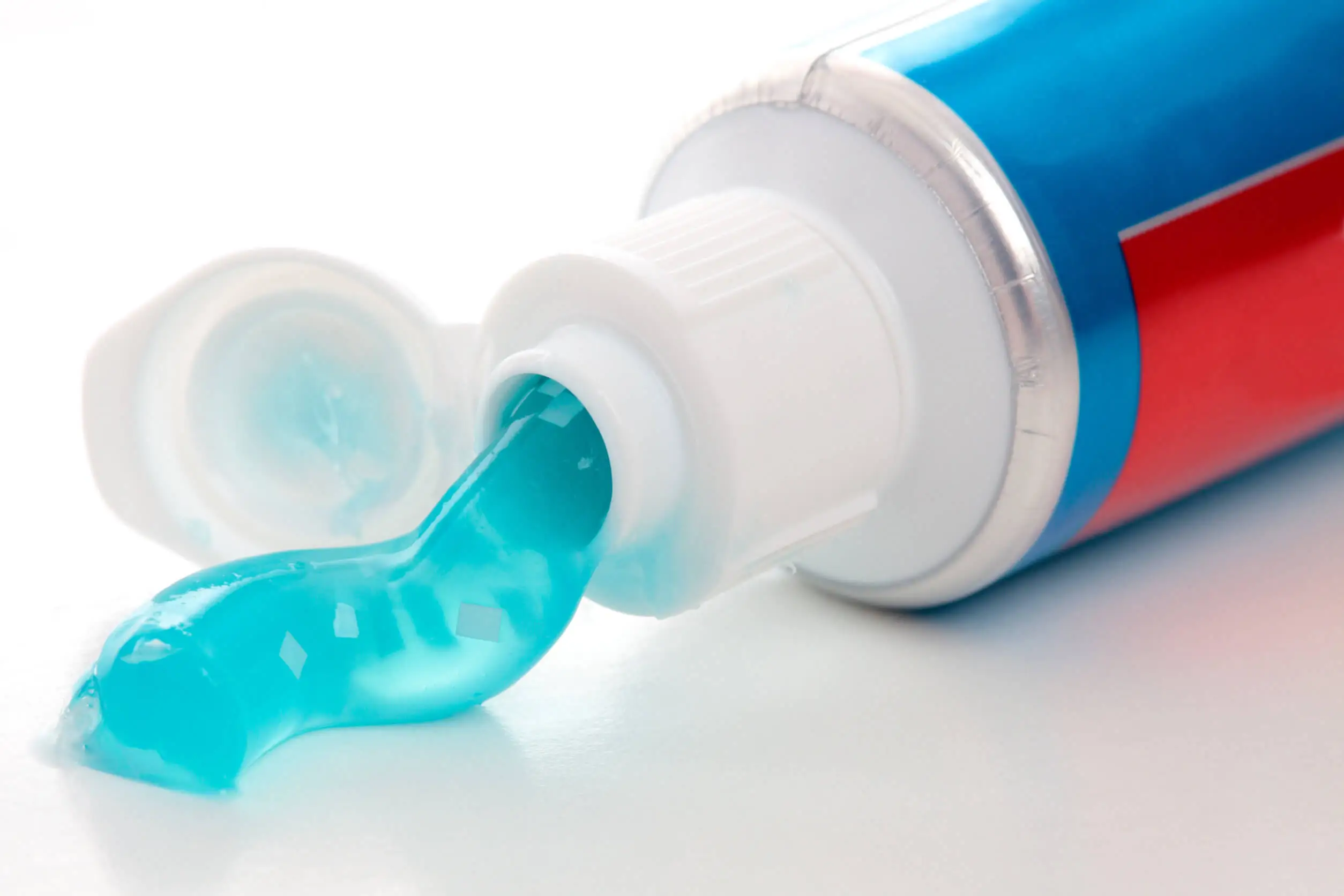8 Different Types of Toothpaste


Written and verified by the dentist Vanesa Evangelina Buffa
There are several types of toothpaste to choose from on the market. Each one has its own ingredients and has particular characteristics that make it more suitable for different situations.
Most of them have the function of facilitating brushing to eliminate bacterial plaque and prevent cavities. However, there are also components that make some kinds of toothpaste more effective in preventing stains, controlling tartar formation, or reducing bacterial proliferation.
The truth is that toothpaste is a very important element when it comes to taking care of oral health. Choosing the most appropriate one for your oral conditions is essential to achieve the expected results.
In this article, we’ll tell you about the 8 types of toothpaste that are most frequently used. By taking into account the particularities of each one, you will be able to choose the one that best suits your needs.
Types of toothpaste
Toothpaste is a hygiene product made up of different chemical components. Its use as a complement to toothbrushing makes it an indispensable part of oral health care.
Most kinds of toothpaste contain sodium and fluoride in their composition, elements that protect the enamel. In addition, they usually contain xylitol to give them a pleasant taste and at the same time prevent cavities.
There are multiple commercial brands, presentations, and flavors. The use of special components in their composition means that there are different types of toothpaste.
This means that there are ideal products to meet the different needs of patients. However, when it comes to choosing, you may feel confused by so many options.
Read on and find out the characteristics of the different types of toothpaste and when each one is recommended.
1. Anticavity toothpaste
Most of the kinds of toothpaste in common use have the function of preventing cavities. This protective capacity is provided by the fluoride content in their composition.
This element strengthens and remineralizes the teeth. It also interferes with bacterial proliferation, reducing the formation and accumulation of plaque on the teeth.
There are kinds of toothpaste with a higher fluoride content than those normally sold. They should be prescribed by the dentist, who will indicate how and how often the product should be applied.
In this case, it’s a toothpaste that is used from time to time in patients with a high risk of caries. It’s a reinforcement in the protection of tissues to prevent demineralization.

2. Anti-tartar toothpaste
This is another type of toothpaste that is quite common in pharmacies and stores. Its active ingredients are usually zinc citrate, pyrophosphate, or sodium hexametaphosphate.
Its function is to help prevent the formation and accumulation of tartar on dental and gingival surfaces. This type of toothpaste is ideal for patients who tend to form a lot of tartar, who have crowding, or areas that are difficult to brush.
However, you should know that if there’s already hardened calculus in the mouth, the product will not be able to remove it. In that case, it will need to be removed by the dentist with a proper dental cleaning.
3. Anti-plaque toothpaste
Of the different types of toothpaste on the market, anti-plaque toothpaste is characterized by its antimicrobial action. Its function is to prevent the accumulation of bacterial plaque and toxins on the oral surfaces.
Thus, it’s a product that prevents carvities and protects the gums. It’s very useful in patients with gingivitis or periodontal disease due to its anti-inflammatory and bactericidal action.
Its main ingredients include chlorhexidine, triclosan, histidine, and zinc citrate. Some of them also contain essential oils with antibacterial effects.
Chlorhexidine has the particularity of staining mucous membranes or teeth and altering the taste if used for a prolonged period of time. For this reason, although these pastes are available over the counter, it’s best to use them only if recommended by a dentist. The professional will indicate the proper way to use them, specifying the frequency and time of use.
Triclosan is another component that should be used with care, since its excessive use could be harmful to a person’s health. Some laboratories have even stopped making kinds of toothpaste with this controversial product, but a dentist may consider it appropriate for certain cases.
For this reason, toothpastes with these ingredients should be used only under medical prescription.
4. Whitening toothpaste
Due to the great concern for our physical appearance that exists nowadays, this is one of the types of toothpaste that has gained more popularity in recent times. It’s a product that helps prevent stains on teeth and gives them a cleaner appearance.
Its composition includes chemical substances and mild abrasives that remove surface stains from teeth and give them a whiter appearance. However, you should know that the effects of this type of product are very subtle and sometimes the patient doesn’t notice any change.
Since it contains abrasive substances, which are much more aggressive than those found in regular kinds of toothpaste, its prolonged use can be harmful to your teeth. Wear of the enamel or the appearance of tooth sensitivity are some of the risks that this type of product could cause.
If you’re looking to achieve a white smile, it’s advisable to undergo dental treatment for this purpose. The materials used in the dental office are much more concentrated and, therefore, more effective.
With professional whitening, it’s possible to eliminate stains and lighten the tone of the teeth. The patient will notice a change in the appearance of their teeth and will be assured that the right products are being used for their mouth.
Whitening kinds of toothpaste are used to help preserve the effects of the previous whitening or to prevent the formation of future stains. Anyway, given the content of abrasives and chemicals that can be very aggressive for the mouth, it’s best to use them in moderation.
We think you may also enjoy reading this article: 9 Natural and Effective Tips for Taking Care of Your Teeth
5. Types of toothpaste for tooth sensitivity
Toothpaste for tooth sensitivity usually contains potassium nitrate or arginine. These elements help to reduce the uncomfortable sensation in the teeth caused by contact with cold, heat, or sweets.
They work by sealing the exposed micropores in the dentin, connected to the dental pulp, which causes a painful reaction to stimuli. However, the sensitivity may be caused by another cause, so it’s best to see a dentist before using this product.
6. Toothpaste without fluoride
As already mentioned, almost all types of toothpaste contain fluoride in their composition. This is due to the protection against caries that this element provides.
However, there are fluoride-free kinds of toothpaste on the market to meet certain specific needs. For example, there are people with systemic conditions, such as hypothyroidism, who may be advised to avoid the use of products containing fluoride.
There are also cases of people who prefer to dispense with the protective effect of this element for fear of its toxicity. The use of fluoride toothpaste externally and in adequate doses does not pose a health risk. Anyway, there are people who prefer to avoid the mineral and this type of toothpaste is suitable for them.
Like this article? You may also like to read: Seven Home Remedies for Removing Plaque From Your Teeth
7. Organic toothpaste
Organic kinds of toothpaste, which also often have an eco or herbal label, are those whose ingredients are natural. Essential oils and elements from nature are used in their manufacture. It should be noted that, in general, they do not contain fluoride.
They are an option for people who decide to use organic and non-industrial products. Also for those who are sensitive to the ingredients in conventional kinds of toothpaste.

8. Children’s toothepaste
Children’s toothpaste is similar to those commonly used by adults, but with a lower concentration of fluoride. In order for the toothpaste to be safe to use, the amount of the mineral should be varied so that it has the recommended dosage for children.
Adults should check the amount of fluoride in the toothpaste. There are different opinions about the ideal concentration for each age. It’s advisable to consult a pediatric dentist about the product indicated for each child. Although in general terms it is suggested to look for a product with 1000 ppm (parts per million) of the mineral.
In addition, parents should be in charge of administering the toothpaste in an adequate way in each brushing, according to the age of the child. In the beginning, from 0 to 2 years of age, a small spot should be placed on the toothbrush, smaller than a grain of rice. When the child learns to spit, around 3 years of age, the dose changes to a portion the size of a pea.
It’s important that the child spits out the toothpaste after brushing since excessive ingestion increases the risk of fluorosis. Adults should clean their child’s mouth from the time the child is an infant until he/she can do it by him/herself, which usually occurs around 6 to 8 years of age. After that, the technique and the use of toothpaste should continue to be supervised.
The presentations of toothpaste for children are varied, with the possibility of choosing different flavors and containers with children’s characters. This can be a motivation for the child to commit to oral health care.
Finding the ideal toothpaste
As you have seen, there are many types of toothpaste and their ingredients make them ideal for use in different situations. When choosing your toothpaste you should consider some aspects, such as your age, if you eat a lot of foods that stain your teeth, if your gums bleed frequently, or if you have sensitivity.
In addition, you should read the ingredients that the product has and its indications. Unless you are looking for the opposite, it is ideal to make sure the toothpaste contains fluoride and xylitol; this will help prevent cavities.
It’s important that you take into account that the product has a seal of approval, such as the American Dental Association. This gives you confidence that it is a safe choice.
Toothpaste complements toothbrushing and helps maintain dental hygiene. However, if you have cavities, tartar, bleeding gums, or stained teeth, treatment with a dentist is necessary.
Regular dental visits will help keep your teeth and mouth healthy. This is also a good opportunity to clear up any questions you may have about the different types of toothpaste and which one is the most suitable for taking care of your mouth.
Regardless of the option you choose, your toothpaste should be comfortable enough to make you want to use it every day. In this way, the product will fulfill its main purpose, which is to help you maintain your dental hygiene and take care of your mouth.
All cited sources were thoroughly reviewed by our team to ensure their quality, reliability, currency, and validity. The bibliography of this article was considered reliable and of academic or scientific accuracy.
- Pérez-Silva, A., Cury, J. A., Martínez-Beneyto, Y., Serna-Muñoz, C., Cabello Malagón, I., & Ortiz-Ruiz, A. J. (2021). Concentración de fluoruro total y soluble en pastas dentales de uso infantil en España. Revista Española de Salud Pública, 95(1), e1-e10.
- Muñoz Nuñez, R. J., & Ramirez Escapa, J. R. (2020). Prácticas sobre el uso de pastas dentales en niños menores de tres años que acuden al Servicio de CRED del Hospital Materno Infantil San Bartolomé, Lima 2020.
- Jarrín Reina, E. D. (2017). Grado de abrasión dental ante el efecto del cepillado con pasta dental normal y pasta dental blanqueadora: evaluación in vitro (Bachelor’s thesis, Quito: UCE).
- Cárdenas, J. M., & Cantú, F. J. G. (2021). Efecto del uso de dentifricos aclaradores sobre la estructura y superficie del esmalte dental. Investigación Clínica, 62(1), 63-73.
- Cardoza Orozco, Z. U., Montiel Hernández, M. I., & Sánchez Rodríguez, B. E. (2020). Propuesta de preformulación de pasta dental a base de aceites esenciales de Eucalyptus citriodora y Mentha sativa para la prevención de alergias bucales Departamento de química UNAN-Managua Septiembre-diciembre 2020 (Doctoral dissertation, Universidad Nacional Autónoma de Nicaragua, Managua).
- Vargas, J. A. D. (2018). Efectividad de pastas dentales a base de calcio, fosfato y flúor en la remineralización de lesiones iniciales de caries. Universidad Complutense de Madrid.
- Pacheco, A. E. F., Cabrera, S. D. G., & Sime, C. L. D. C. H. (2019). ANTISÉPTICOS ORALES: CLORHEXIDINA, FLÚOR Y TRICLOSÁN. Salud & Vida Sipanense, 6(2), 4-14.
- Carrasco, I. R. Z., & Lozano, J. C. (2017). Controversy over the use of triclosan in commonly used antibacterial products. Revista Latinoamericana de Infectología Pediátrica, 30(3), 93-96.
- Abubakar, A. TRICLOSAN RESISTANCE IN BACTERIA AND ANTIBIOTICS CROSS-RESISTANCE.
- Pannuti, C. M., D’Hyppolito, I. M., Cruz, L. R., Silva, C. G. B., & Romito, G. A. (2018). Pasta dental con fluoruro de amina en la prevención de caries dental: revisión de la literatura. Periodontia, 26-35.
- Sánchez-Pérez, L., Sáenz Martínez, L. P., Molina-Frechero, N., Irigoyen-Camacho, M. E., & Alfaro-Moctezuma, P. (2018). Riesgo a caries. Diagnóstico y sugerencias de tratamiento. Revista ADM, 75(6).
This text is provided for informational purposes only and does not replace consultation with a professional. If in doubt, consult your specialist.








